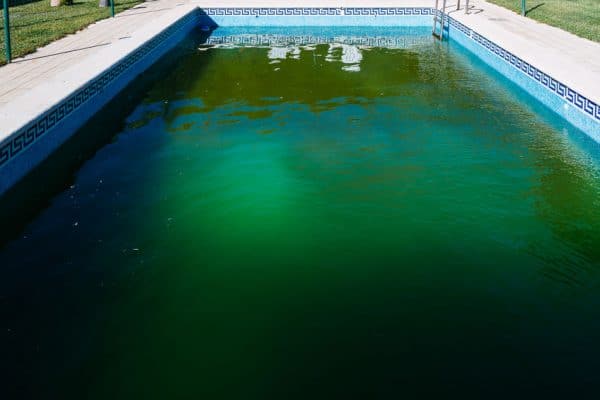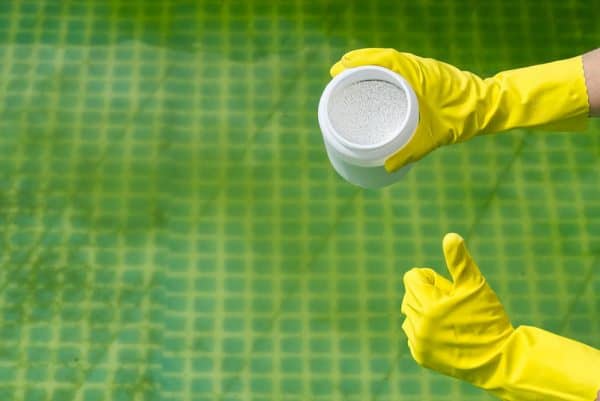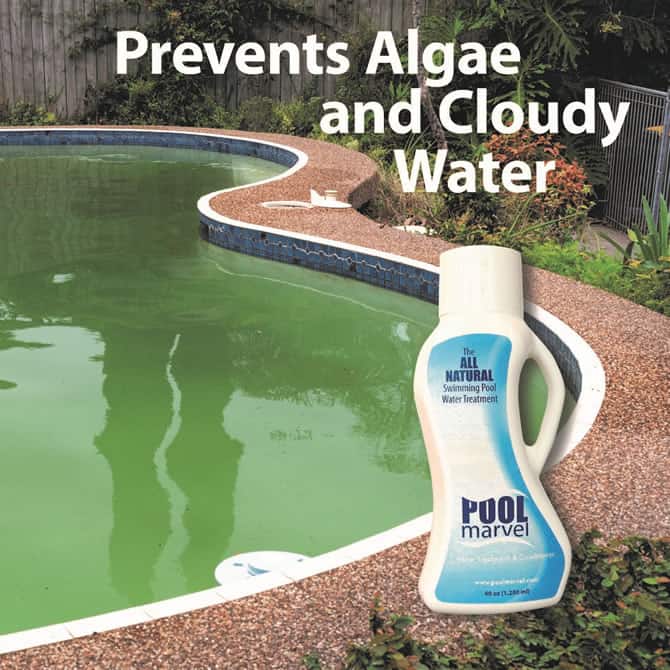
Swimming Pool Algae Cause, Effects, Treatment, & Prevention
Nothing can interrupt your plans for a refreshing dip in the pool, like discovering the water has become murky with discolored slime spreading across the walls. Pool algae is a common issue for swimming pool owners that should be addressed as soon as possible. Fortunately, there are several solutions both for removing pool algae and pool algae prevention. By learning more about swimming pool algae you can arm yourself with the necessary tools and knowledge to keep your swimming pool water clean and ready for use.
Issues caused by swimming pool algae
Swimming pool algae can be a minor nuisance, or a major problem, depending on the types of pool algae present and the extent of the infestation. When pool algae are present, they can affect the quality and safety of your pool water. If you notice algae or discoloration, avoid using the pool until it’s properly treated (with a pool algaecide) and the algae are gone.

While common algae infestations such may not directly harm swimmers, they can still cause problems. For example, bacteria such as E. coli can thrive if you have an overgrowth of yellow algae in your pool. An excess of white algae in your pool can cause physical symptoms, including allergic reactions, headaches, and respiratory infections. Black or yellow algae in your pool can result in staining or discoloration on the pool’s surface.
Causes of swimming pool algae
Not covering your pool allows algae spores to enter the pool. It also allows water to evaporate and may cause an imbalance in the pool’s chemical levels, allowing algae to grow.
Dirty pool filters are another common cause of swimming pool algae. A filter is one of the most effective pool algae prevention tools because it traps contaminants and pulls them from the water. If you don’t consistently clean your filter and remove buildup, water cannot circulate as easily. This can cause your pool to become discolored and full of foreign matter.
Low alkalinity and pH levels create an environment where pool algae can grow. This is especially likely if fluctuations are frequently allowed to happen, and water becomes acidic. If pH and alkalinity levels aren’t kept at appropriate levels, sanitizer may not be able to effectively do its job to combat algae growth or bacteria.
Types of pool algae
Four main types of pool algae can develop in poorly maintained water. Algae and mold can grow in any wet environment with temperatures over 68 degrees Fahrenheit, which applies to most pools. If you’re dealing with a swimming pool algae infestation, you need to act quickly. A weekly dose of pool algaecide will prevent it from getting worse and becoming a challenge to eliminate.
Green algae in a pool, named for the dark green shade it turns the water, are among the most common types found in swimming pools. You may find green algae in a pool when there is insufficient chlorine. Green algae in your pool is the easiest to treat and prevent.
Yellow algae in the pool, also known as mustard algae, is tricky to eradicate. Chlorine and other sanitizers are not as effective on yellow algae in the pool because yellow algae are resistant. If you have yellow algae in your pool, you may need to use a specific pool algaecide designed to treat it, along with high chlorine shock treatments.
Black algae in the pool are usually found in cracks and crevices of the pool. Its dark color can permanently stain the walls and filter. Black algae in your pool is difficult to get rid of entirely, even with a hard scrubbing, because it works its way deep into the surfaces on which it resides. You can use a pool algaecide to try to get rid of a minor infestation that hasn’t taken hold too deeply yet. But for a more prevalent bloom of black algae in the pool, you may need to drain the pool entirely and do multiple washes. You can also try rubbing chlorine tablets directly on black algae in the pool or using a stiff-bristled scrub brush.
White algae in the pool, or white mold, is really a fungus that looks like flakes or bits of tissue floating around the pool or in the filter. White algae in the pool probably started growing in the plumbing and filtration systems. So it will need to be addressed throughout your entire system before it clogs the system. You can use a pool algaecide to help kill white algae in the pool, but you’ll also need to clean your filter. High alkalinity is another cause of white algae in your pool, so balancing the pH levels is essential.
How to remove algae & use swimming pool algaecide
By the time you notice a visible swimming pool algae infestation, it will take much work to get rid of it and prevent it from returning. It’s hard to altogether remove the algae, even with chemical treatments like pool algaecides. Depending on the types of pool algae present, you may also need specific chemicals designed to address the types of algae.

First:
1. Clean algae and mold off surfaces and vacuum floating debris.
2. Test and adjust pH and alkalinity levels accordingly
3. Shock your pool water
4. Use swimming pool algaecide if needed
5. Run your filter for at least 8 hours to clear up the water.
6. Test chemical levels again.
7. Clean or replace your pool filter.
Then:
1. Focus on swimming pool algae prevention to keep growth from reoccurring
2. Start a pool maintenance plan (see our guide for help)
3. Check chemical levels daily and keep alkalinity, pH, and water hardness balanced
Pool Algae Prevention
Use an enzyme product like Pool Marvel to prevent the growth of biofilm and algae.
Proper filtration is crucial when it comes to swimming pool algae prevention. So run the filter at least 8 hours a day, possibly more during hot, sunny weather. If you have a low-volume pump or hush pump, it should run nonstop. Pool algae can grow more easily and quickly when water is stagnant.
A clean filter is necessary for proper filtration and pool algae prevention. If the filter isn’t clean, foreign matter can build up. If you’re concerned about your filter’s cleanliness, use a product like Spa Marvel Filter Cleaner, and rinse it. If the filter still has stains that don’t come out even with pool algaecide, like those from black algae in your pool, you may need a new filter.
Maintain balanced pH and alkalinity levels. This will ensure the sanitizer works efficiently and the pool water stays sanitized and inhospitable to algae. The best range of parts per million (ppm) for your pool are:
pH: 7.2 – 7.8 ppm
Alkalinity: 80 – 120 ppm
Hardness: 175 – 250 ppm
If you follow these pool algae prevention steps, your pool should stay clean and clear without needing to add pool algaecide or adding chemicals more often than usual to correct imbalances or unhealthy conditions. Maintaining your pool with the right level of sanitizer, balanced water, and Pool Marvel Water Treatment and Conditioner can prevent algae outbreaks and bacteria buildup from occurring.

